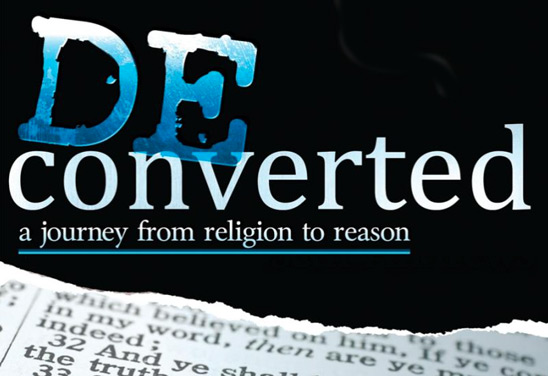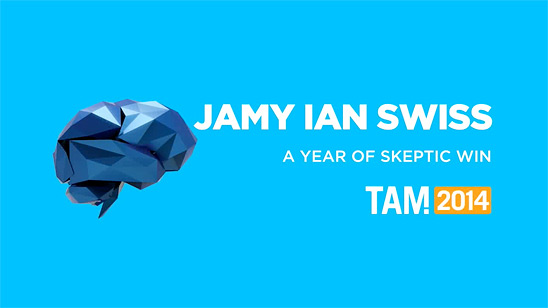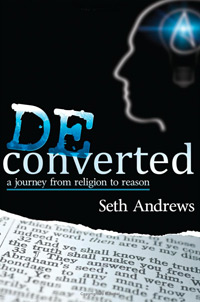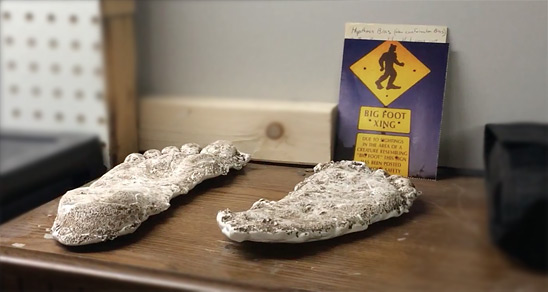In this week’s eSkeptic:
A Year of Skeptic Win
At The Amazing Meeting 2014, renowned skeptic and magician Jamy Ian Swiss recaps the year in skeptical wins with passion and humor, demonstrating through numerous examples how we skeptics are making a difference, how and why the world is becoming ever more rational and reasonable thanks to the spread of skepticism and critical thinking, and what you can do to contribute to this progress. Don’t miss this impassioned call for action.

About this week’s eSkeptic
In this week’s eSkeptic, Donald R. Prothero, reviews Deconverted: A Journey from Religion to Reason, by Seth Andrews.
Share this article with friends online.
Subscribe | Donate | Watch Lectures | Shop
The Thinking Atheist Confesses
by Donald R. Prothero
In recent years, there have been a number of “confessional” books describing the deconversion experience of non-believers. The most famous of these is Dan Barker’s (2012) Godless: How an Evangelical Preacher Became One of America’s Leading Atheists, along with Jerry DeWitt’s (2013) Hope After Faith: An Ex-Pastor’s Journey from Belief to Atheism. Daniel Dennett and Linda DaScola’s (2013) book Caught in the Pulpit: Leaving Belief Behind documents a number of ministers and preachers who have lost their faith, yet must keep up appearances or face ostracism and rejection from their families and the entire community.
So far, however, we are only hearing from ministers who lose their faith. Seth Andrews provides an autobiographical account of someone who was deeply involved in fundamentalism. More than just a local minister, Andrews was even more influential as a Christian broadcaster, DJ, and talk-show host on some of the most widely broadcast Christian radio programs in the United States. Not only was his voice heard by far more people than most local ministers can reach, but he wasn’t trained as a theologian. Thus, he can capture the thinking of someone who is a rank-and-file evangelical. Now he has come all the way from one extreme to the other, using his radio and studio skills to create numerous popular YouTube videos and “The Thinking Atheist” podcast, one of the best and biggest of all the secular podcasts out there. Several hundred thousand subscribers download every show, a number few other secular podcasters can match.
Andrews writes in a friendly, relaxed folksy style, just as you hear him on the air, and it suits his humble narrative well. He is a good storyteller and conversationalist not only in his radio work, but on the printed page as well. His autobiographical account begins with his strict religious upbringing, where only Disney and other G-rated movies were allowed, and his parents reacted severely when Seth was exposed to science (such as evolution) in school. In high school, he became a fan of “Christian rock”—the bland, watered-down, theologically safe alternative to real rock’n’roll bands. They imitated and plagiarized nearly every trend in popular music, except with godly lyrics. This led him to his first career at a small radio station in Oklahoma, where he worked his way up to becoming the leading DJ on one of the top Christian rock stations in the land by the mid 1990s.
Then in 1997, the first of a series of events shook his faith: the “John Lennon” of Christian rock, Rich Mullins, was killed in a horrible car accident. Andrews describes his feeling of doubt about God’s mercy, and his horror at the event, as well as the revulsion he felt when everyone began rationalizing it by saying “God called him home.” He further slid away from his safe sheltered world when he lost his job at a conservative Christian radio station and had to take work on another radio station where he was surrounded by secular people all the time.
Then the events of 9/11 made him question God even further, especially when religious leaders like Pat Robertson and Jerry Falwell blamed it on homosexuals and other secular sinners. His ebbing faith remained dormant until 2004, when he saw the video of Christopher Hitchens debating Rabbi Shmuley Boteach. Hitchens’ intelligence, quick wit, honesty and candor ran circles around the theologically twisted ideas of the Rabbi. Soon Andrews was reading not only the works of prominent atheists, but also re-reading the Bible and discovering how barbaric it is. Meanwhile, the radio business downsized and went syndicated, so secure full-time jobs in in that industry nearly vanished. Andrews quit and became an independent producer before the axe fell. By 2009, he came out of the theist closet to his family and began to produce short atheist videos for YouTube, which were huge hits. Then he started on his own, self-produced show that is now “The Thinking Atheist.”
The latter part of the book is full of his shrewd observations on religion and atheism. Among the gems are his list of the different categories of believers he’s come to know (the Feeler, the Theologian, the Folklorist, and the Foot Soldier), and his answers to the common questions he gets from the many believers who cannot accept his atheism. As someone who grew up in a slightly different Protestant tradition (Presbyterianism) and grew out of his family’s faith also, I can relate to many of Andrews’ experiences—as can most people who were raised in strictly religious families and have found their way out of their religious shackles.
Even though the book is self-published, it is remarkably cleanly produced with no typographical or grammatical or other errors often found in books without the support of a major publisher. Thanks to the wonders of the modern internet age, people can now self-publish important works such as this and allow Amazon.com and other online booksellers to do the rest. Andrews’ book is a short but very enjoyable read. It is especially of interest to anyone who has made a similar journey from faith to non-belief, or wishes to understand how this process works. ![]()
Bigfoot or Baloney?
Confessions of a Bigfoot Hunter
Chatter about Bigfoot never seems to end. Back in January, we shared with you the confessions of Bigfoot-hunter-turned-skeptic Jonathan Blais. Once fascinated by the prospect of a Bigfoot species, he is now committed to the science behind why people believe in extraordinary claims. To accompany his confessions article, he recently put together this video montage and timeline of the events in the Adirondack wilderness.















